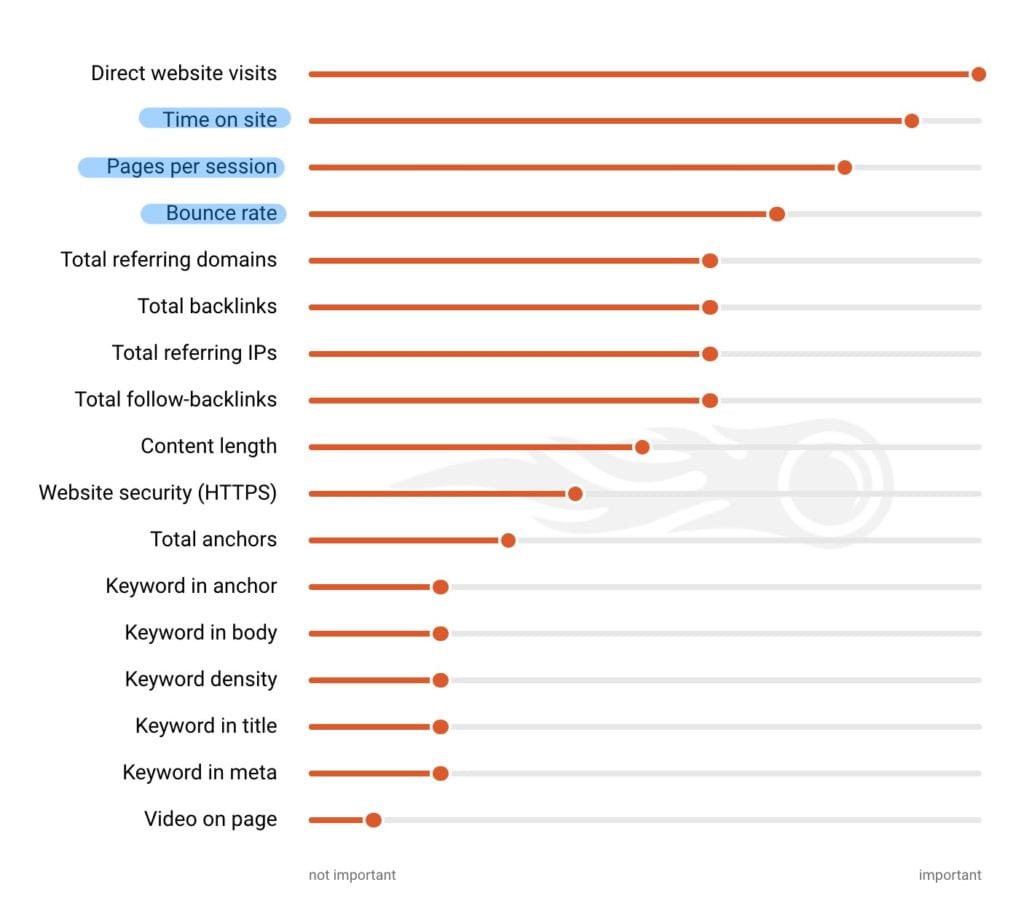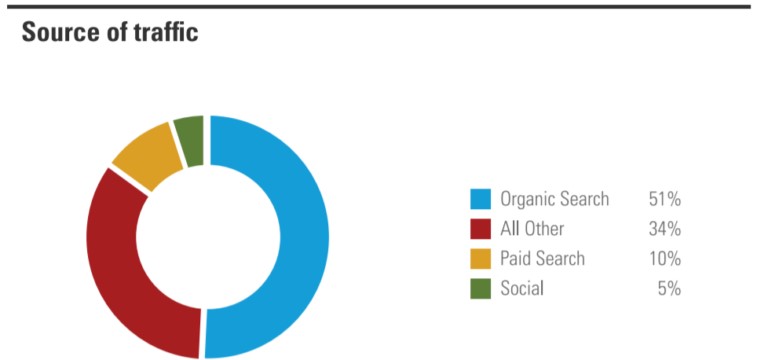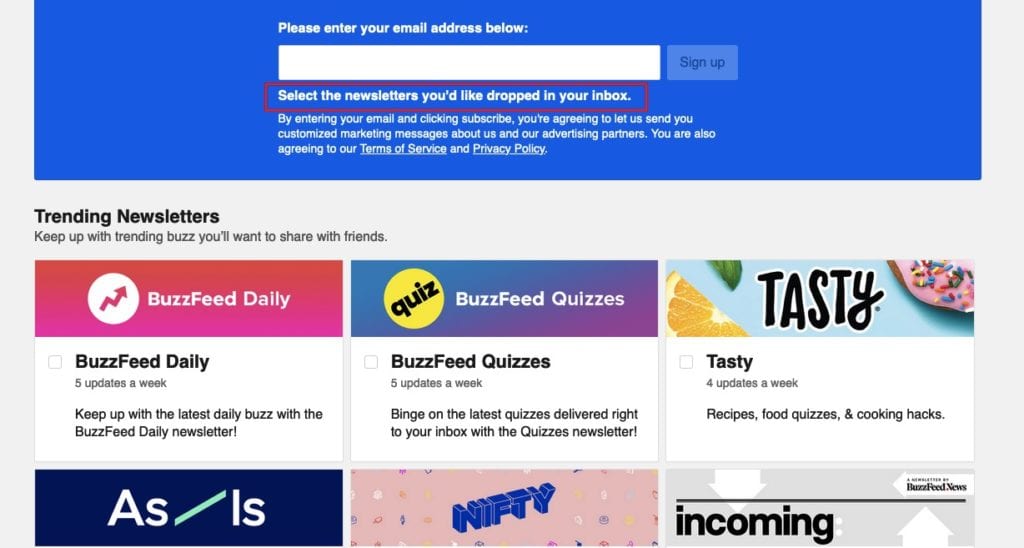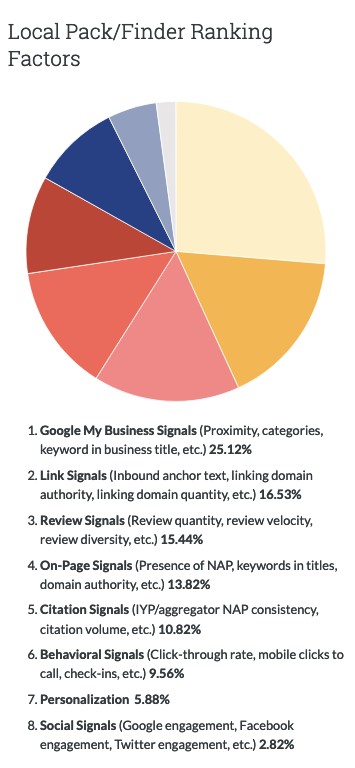Email Marketing: Can It Help Your SEO Efforts?

Search Engine Optimization (SEO) is one of the most helpful techniques marketers use to gain exposure and, when done correctly, it can boost essential aspects of your marketing game. But how is that?
As you can see from the graph above, half of your website’s traffic comes from organic search results, which means it’s imperative to have an SEO-ready website. This could potentially boost your brand’s visibility and help you get an excellent Search Engine Results Pages (SERPs) ranking.
However, with 1,197,982,359 websites in January 2021, standing out seems like a gigantic feat. You will need way too many links, laser-targeted keywords, a lot of resources, the perfect team…
Or perhaps you’ll need to incorporate email marketing into your marketing game.
Digital marketing is pretty much a net with interconnected aspects that help you survive and gain visibility in a world as chaotic as the digital world.
Now, while some of its aspects might seem to be correlated by proxy – like SEO and email marketing -, every part of digital marketing is related to the next one.
So, let’s see how your email marketing campaigns can help your SEO efforts.
Low Bounce Rates and Better Traffic
Email marketing is more than just creating offers, using countdown timers or FOMO, and picking out and optimizing email templates that will convert prospects into customers and customers into repeaters.
Email marketing campaigns, first and foremost, can help drive all the traffic you need to your website with content and offers that are highly targeted and engaging. Visitors that want to engage with your content will do as your CTA says and, since they’ve clicked on it and have been redirected to your website, they are less likely to bounce.
Of course, we’re talking about people that are ready and willing to convert and can be characterized as qualified traffic.
To make sure your traffic is nothing short of perfect, you’ll need to study your audience very closely, segment them into categories and personalize your email marketing message accordingly to make it more enticing and interesting.
A prospect that is excited about your content will be eager to see what your eCommerce store – or your website, in general – can offer and, in the end, will be that much more likely to make a purchase and convert.
Just make sure to have a clean, active email list that you will segment before creating your first email marketing campaign. You can create segments according to geographical location, age, educational background, or leverage the power of repeaters and create specific content for them.
If you’re not sure how to segment, maybe you can do it like Buzzfeed:
By allowing your users to choose the type of content they want to see from your brand, you can redirect traffic exactly where you want it.
All in all, search engines tend to think that the longer the people stay on a website, the more valuable the content is. So, low bounce rates and interesting, laser-targeted content in your newsletters and, by extension, your website can boost your rankings. Which is what SEO is all about.
Better Content Equals Better User Experience
User experience is one of the most important aspects of SEO, and search engines are adamant about creating the best user experience:
“The most important factors that Google considers when choosing which links to show on the first page”
Search engines are, after all, only as valuable as the first page of the results of a user’s query – which means that if the first page is a mess, they’re not useful at all.
This is why finding content that is relevant is so important to them. But how can you tweak this fact to your advantage and create a content calendar able to boost your SEO efforts using email marketing?
Just figure out the user intent by leveraging the power of surveys. Prospects welcome surveys in general, as they indicate that the brand works with them in mind. Surveys are a fantastic tool that can clarify most dark spots of a marketing strategy. So, ask your prospects about the type of content they’d like to see from you.
Pick out a topic and filter their answers accordingly. Invest in an AI and machine learning tool that will see patterns that humans just can’t and will segment the responses in a way that will correspond to your audience on a one-on-one basis.
Then, create content that will speak directly to your audience. Use newsletter templates and email designs that will make sense and correspond with the users’ intent. Write a blog post, create a promotional campaign or a discount code, anything that works, and link fragments of your content to your email. That way, you will see intentional traffic come to your website.
Of course, a targeted email can’t work wonders if your content doesn’t answer the user’s intent or if you’re not using keywords and SEO tools that will help you rank higher.
Super Pro Tip: Sometimes, a great way to create a highly engaged audience is to make exclusive content available only through your newsletters’ CTA button. That way, more people will be curious and willing to subscribe to your email list.
SEO Loves Reviews – So Does Email Marketing
One of the primary uses of email marketing campaigns is asking for reviews. And it is also one of the best ways to boost your SEO efforts, especially if you own a small local business:
As you can see, review signals make up 15,44% of how Google decides to sort and rank its results. Not to mention how users are more than willing to look up reviews for any business, especially local businesses, before making up their minds about interacting with them.
So, let’s assume that you own a small restaurant in a small suburb. You will need to have a website that specifies things such as your menu, whether you cater to special events, whether you accept business gift cards, whether your space is children-friendly, and so on.
Pinpointing these details won’t count if there is no review to back them up. So, create and send an email campaign that will urge your restaurant’s customers to write a review. This will help boost your audience’s trust overall and boost your local SEO efforts.
Notice the snowball effect? Something as small as an email asking for a review can help your SERP rankings, which can give you more exposure, which, in the end, means that you get to rank for relevant keywords used by a larger chunk of your – or your competitors’ – audience.
Not to mention how a review is a valuable tool to gain insight on the likes and dislikes of your prospects that you can use to your advantage.
Share Your Message Around
A fantastic way to get more traffic and better rankings is to leverage social media, as we all know. But how can email marketing contribute to social media shares, exposure and brand awareness, and, in the end, more qualified traffic and fantastic SEO?
Create an email newsletter that will be shareable. This means that the recipients will be able to share it on their social media. That way, your content will reach more people, and you’ll create more engagement for your brand.
Now, you know how much digital marketing loves videos. You can create a video email marketing campaign and use a CTA button to urge prospects to share it around. Videos convert better than images and a whole lot better than text posts because they offer small, bite-sized pieces of information that can catch a prospect’s eye.
High engagement and many social shares can improve your reach and authority and help you attract more prospects. These prospects will use a search engine to look for your brand’s name, creating, in turn, a trend.
This will improve your reach and your SERP ranking. Just make sure you are very particular about what your recipients need to do with your content.
So, back to your email newsletter’s CTA button. Make sure to create one that will pinpoint the exact action your prospects need to take, be it to share your content on their social media profiles or to follow a link to your website. The more specific you are, the better.
In Conclusion
Email marketing and SEO may not seem to mix at first glance. However, they’re both part of your digital marketing efforts, much like social media marketing is.
Email marketing can indirectly help your website’s visibility and authority by making users come to you rather than making them see your name everywhere.
Drive qualified leads to your website by creating segmented and personalized email marketing campaigns that will serve your goals and lead to better rankings. Always analyze your data, develop new strategies, and A/B test for the best results.
That way, you will manage to influence a more significant chunk of your audience, increase social media exposure and organic searches, and, in the end, get the best of SEO through your email marketing strategy.




